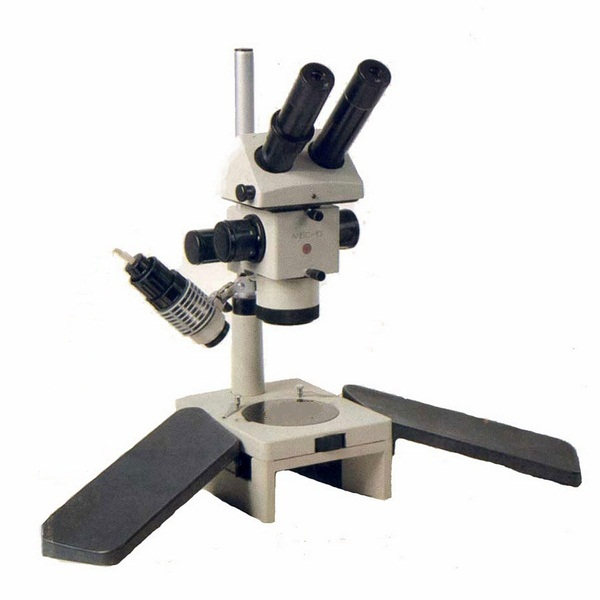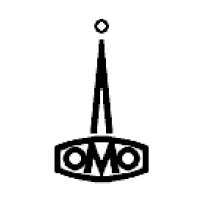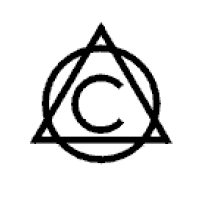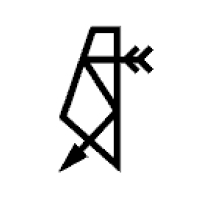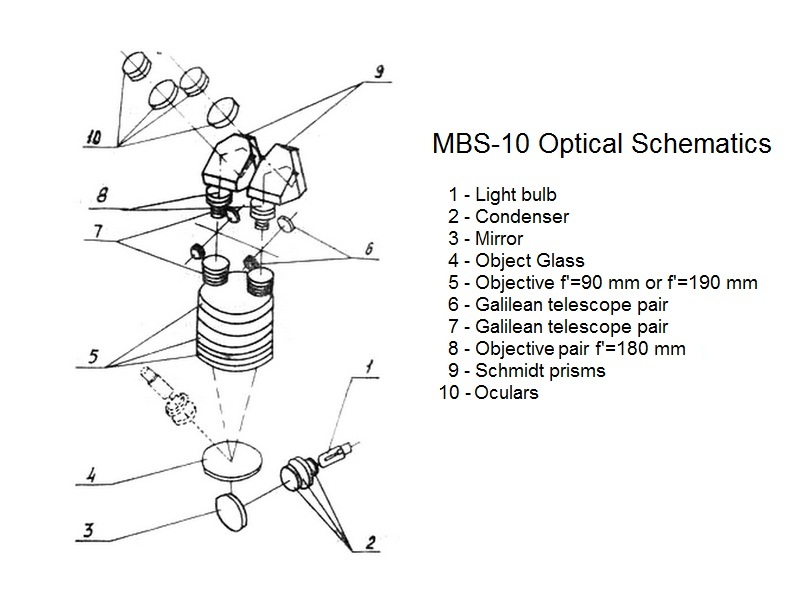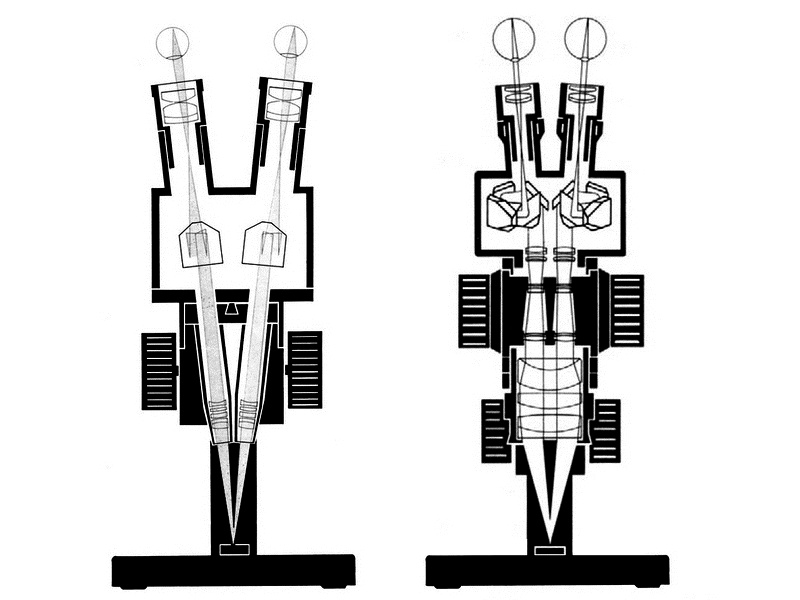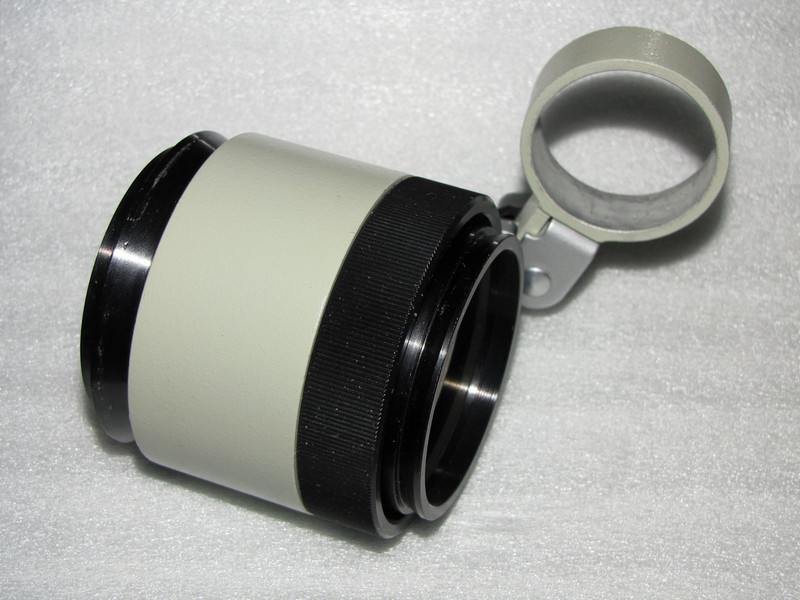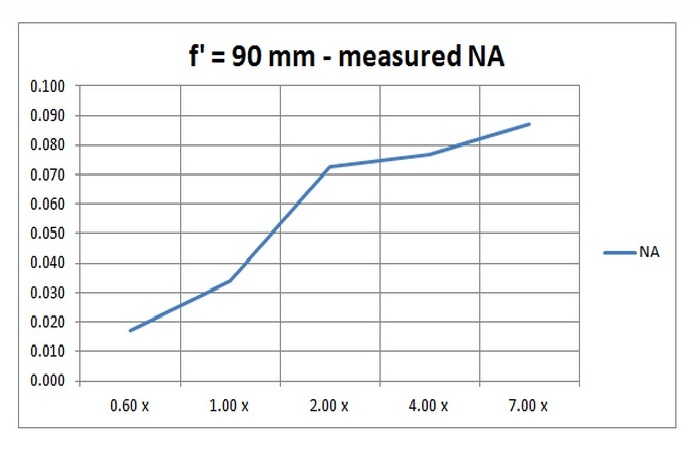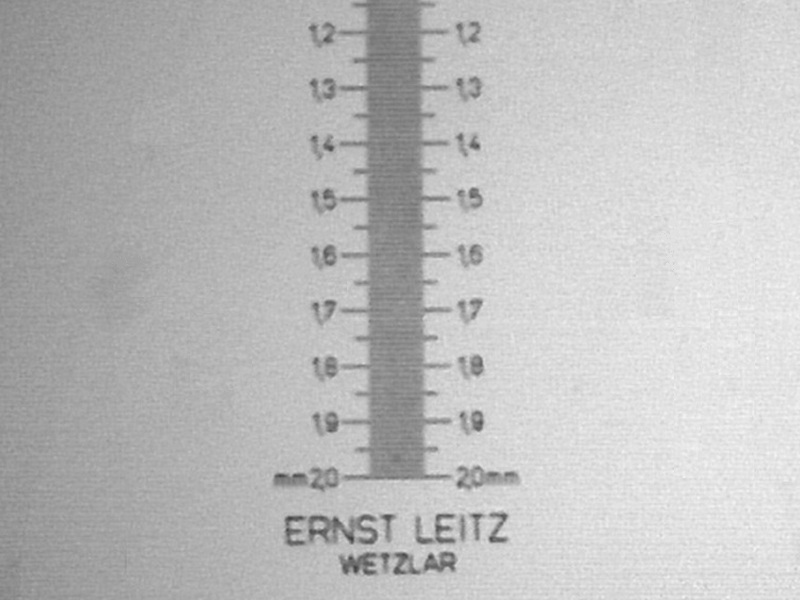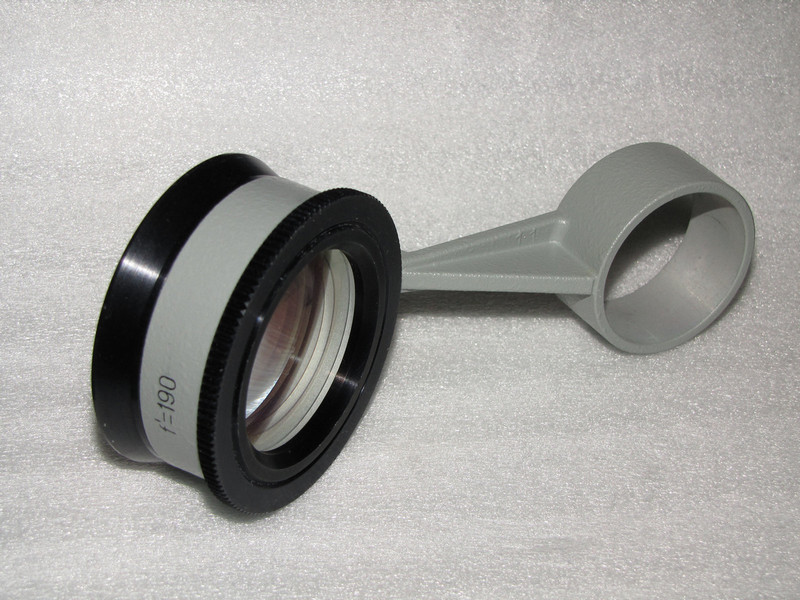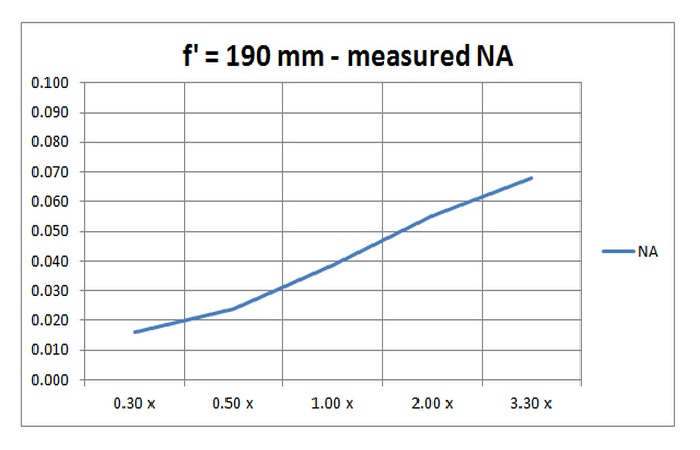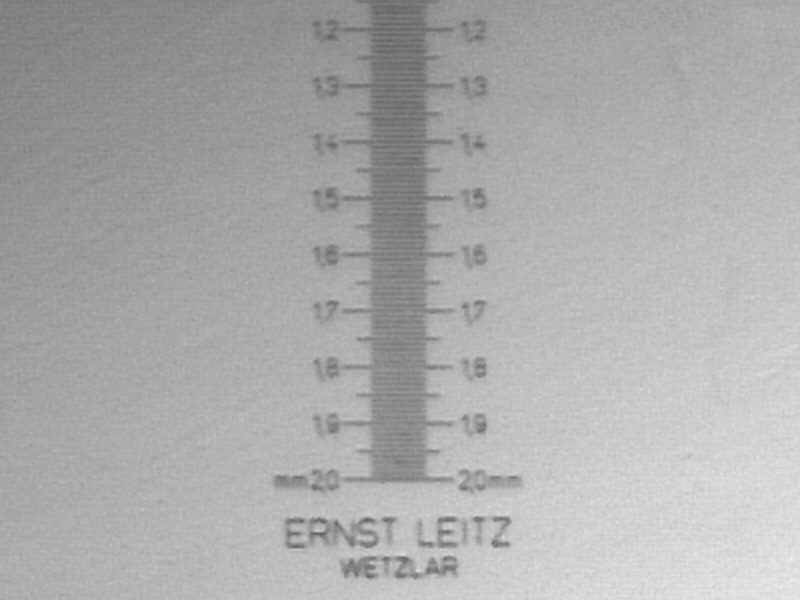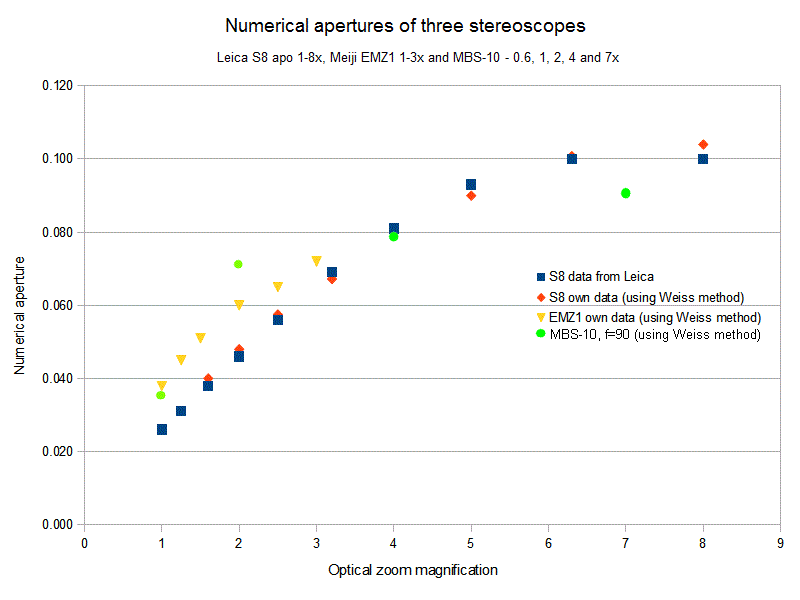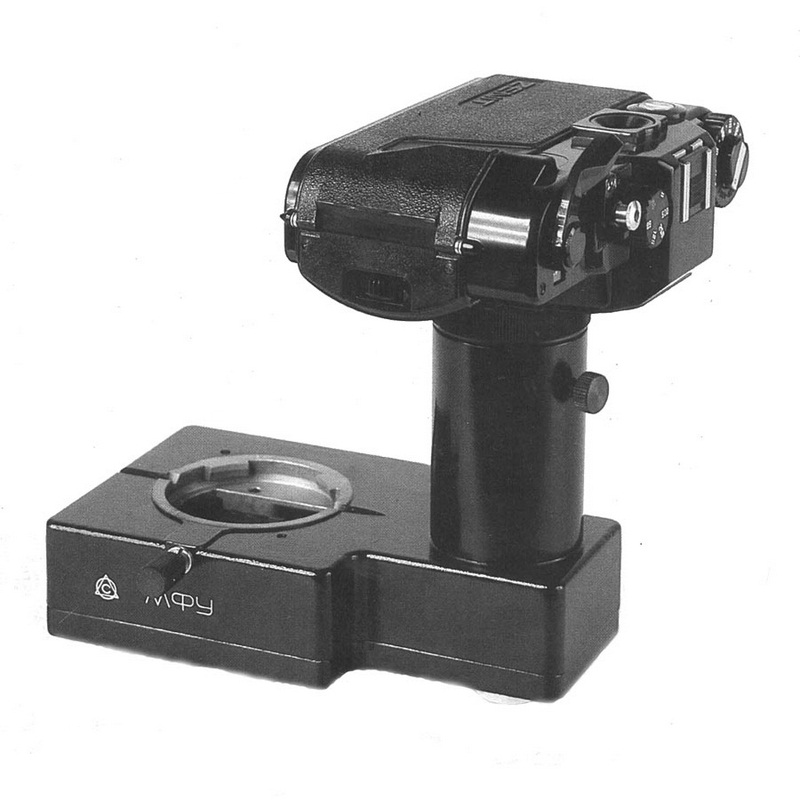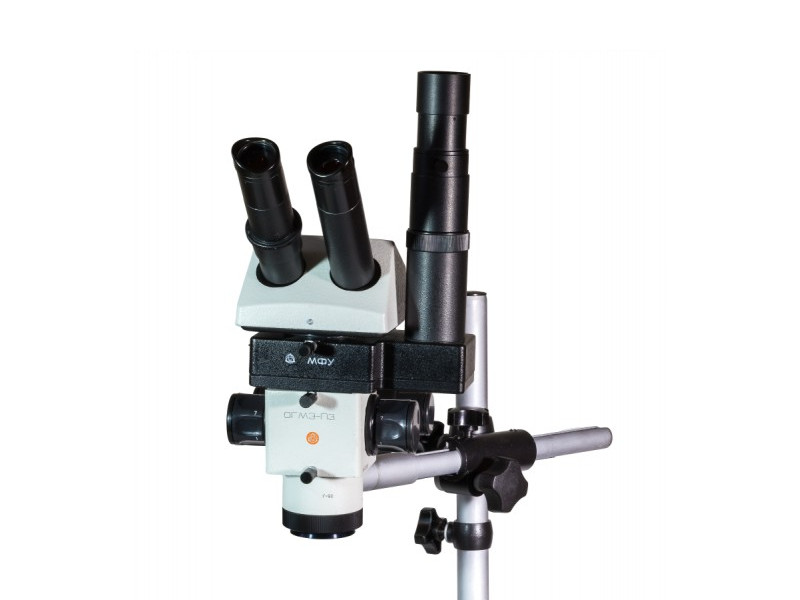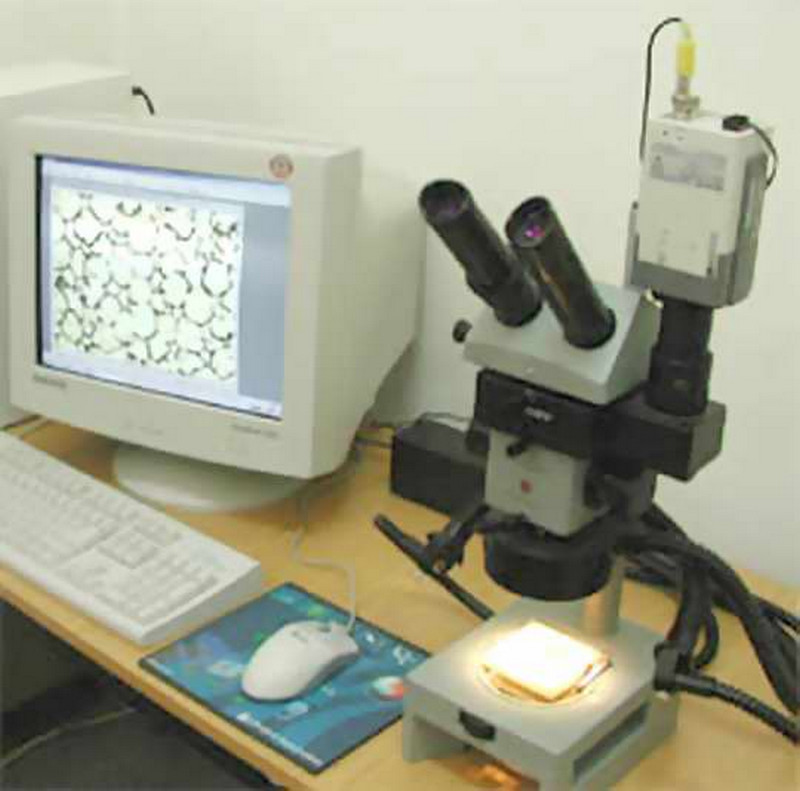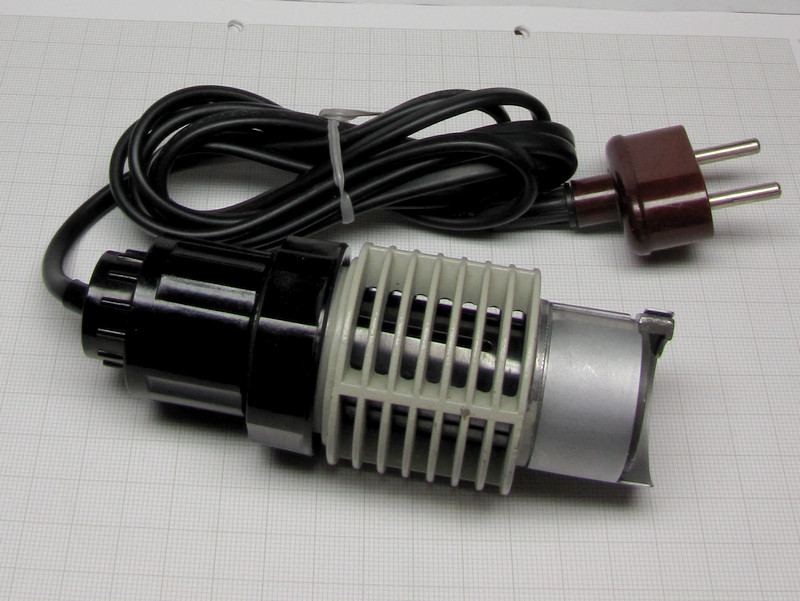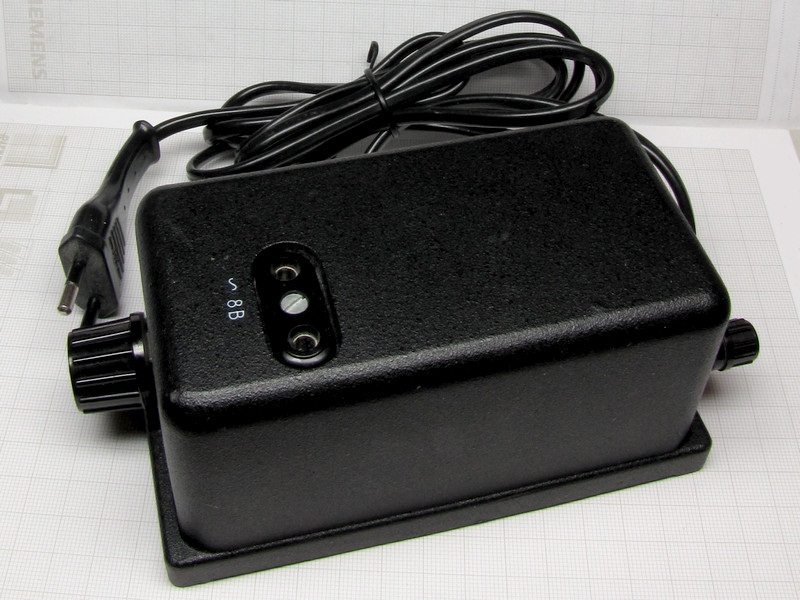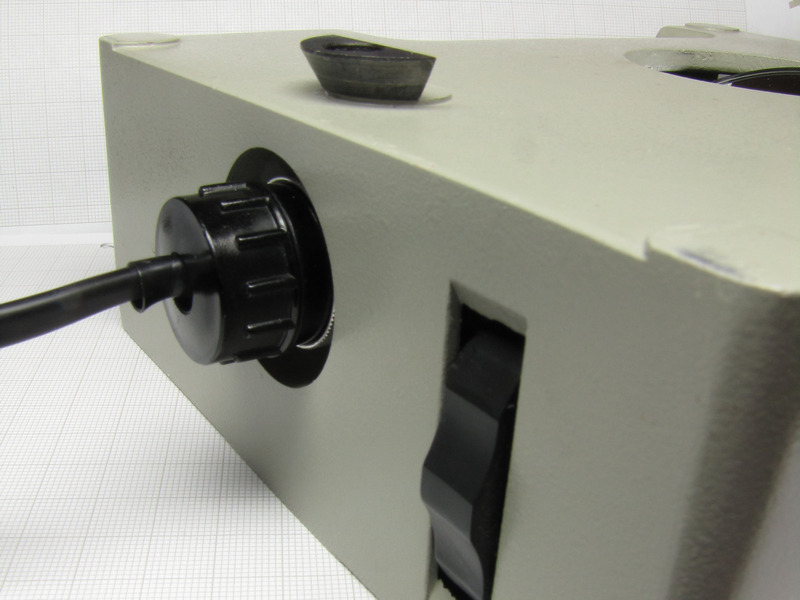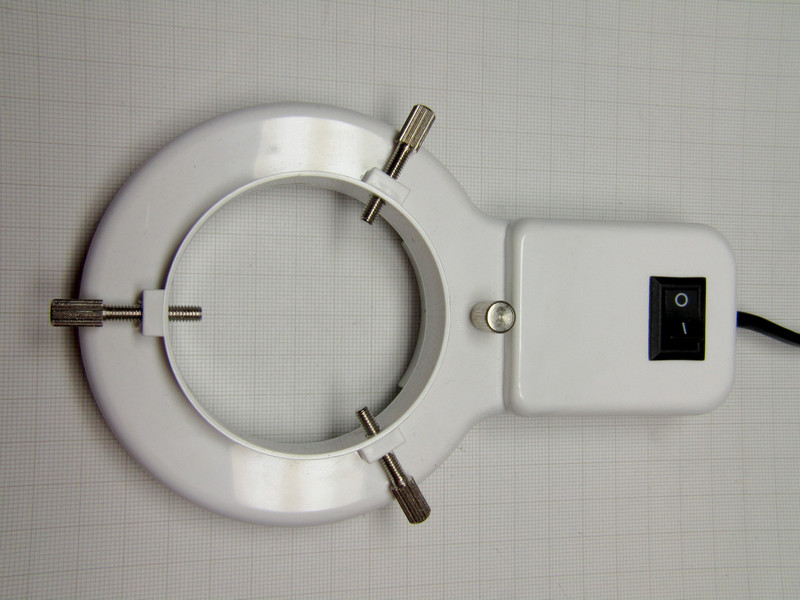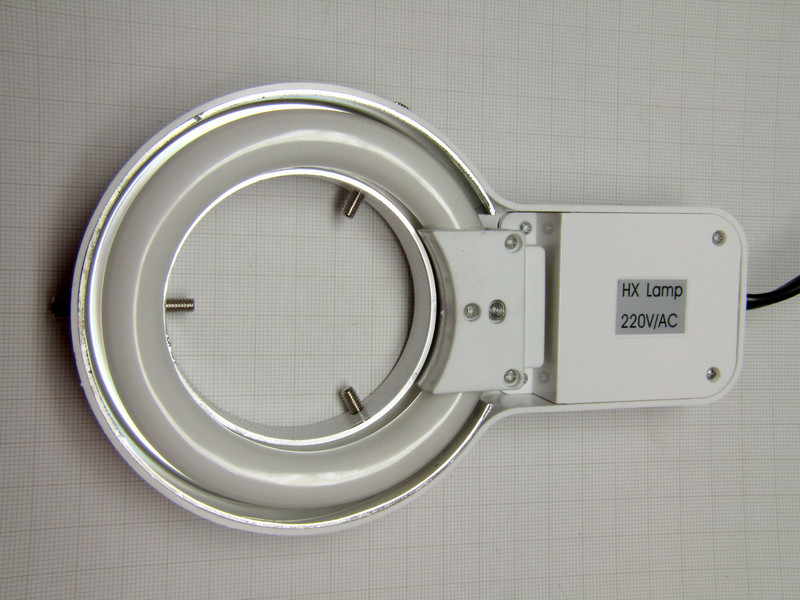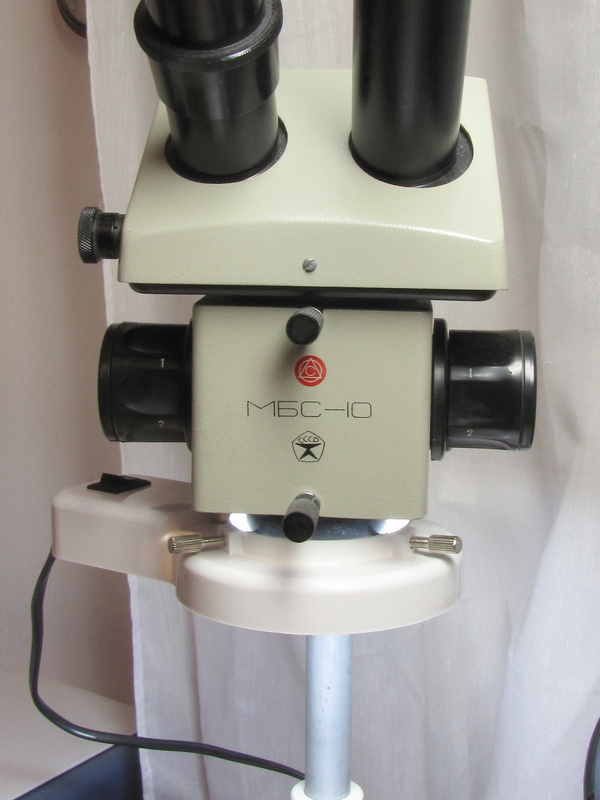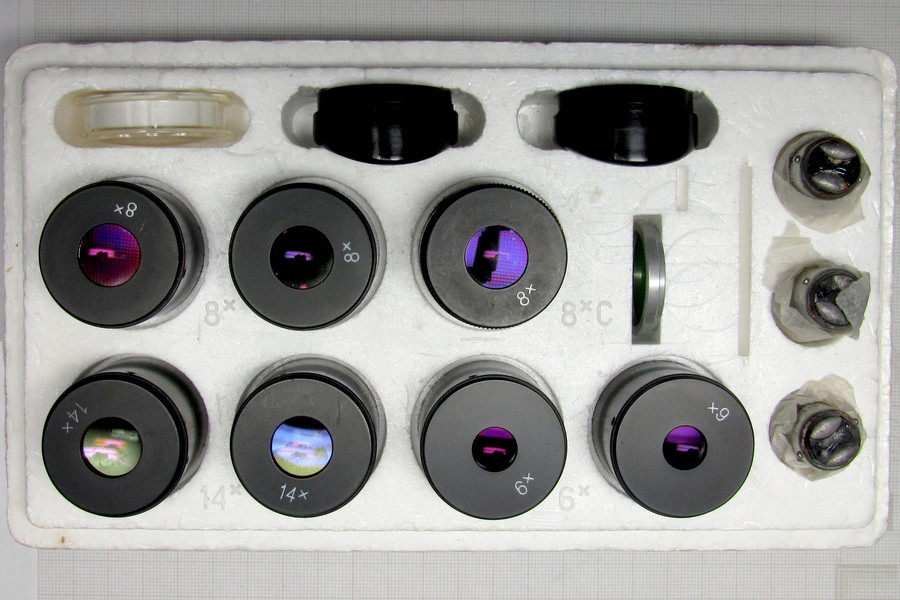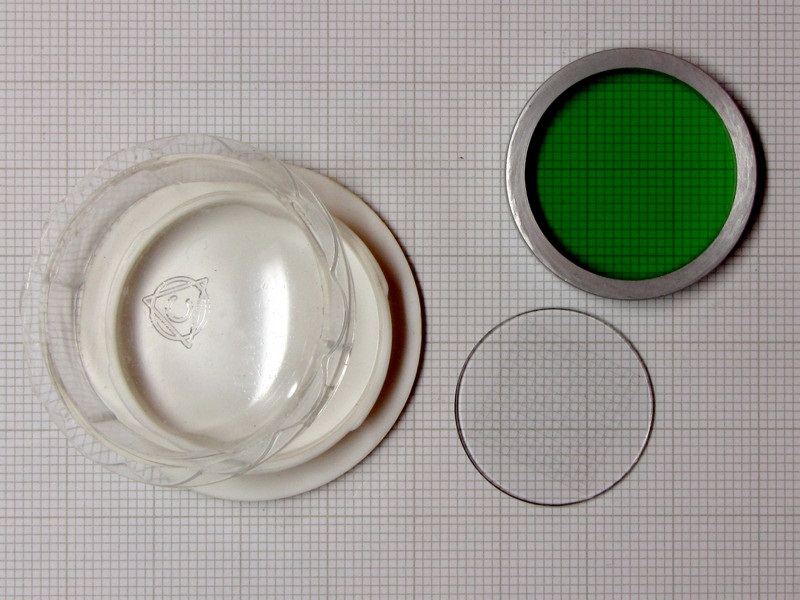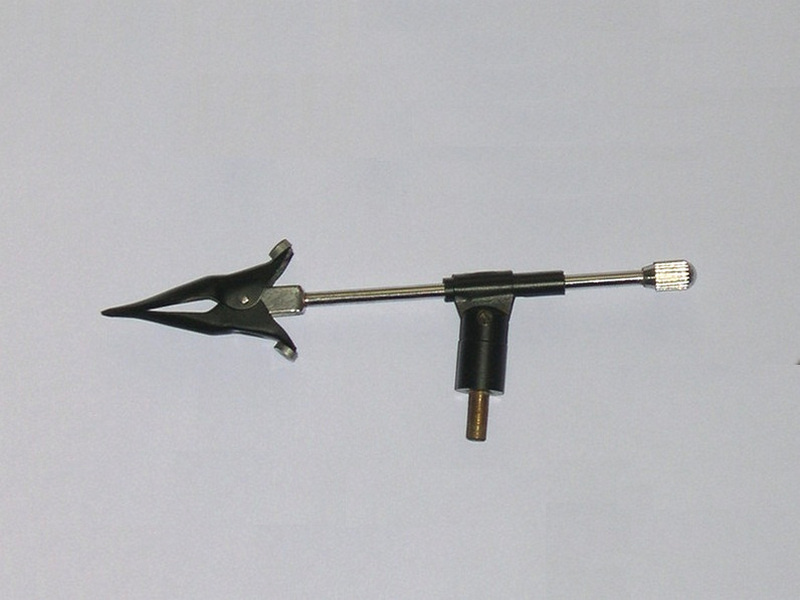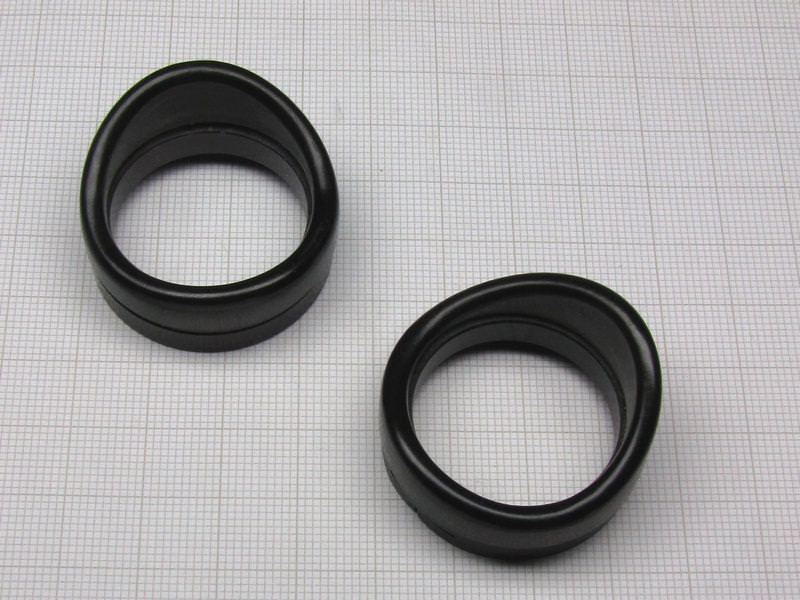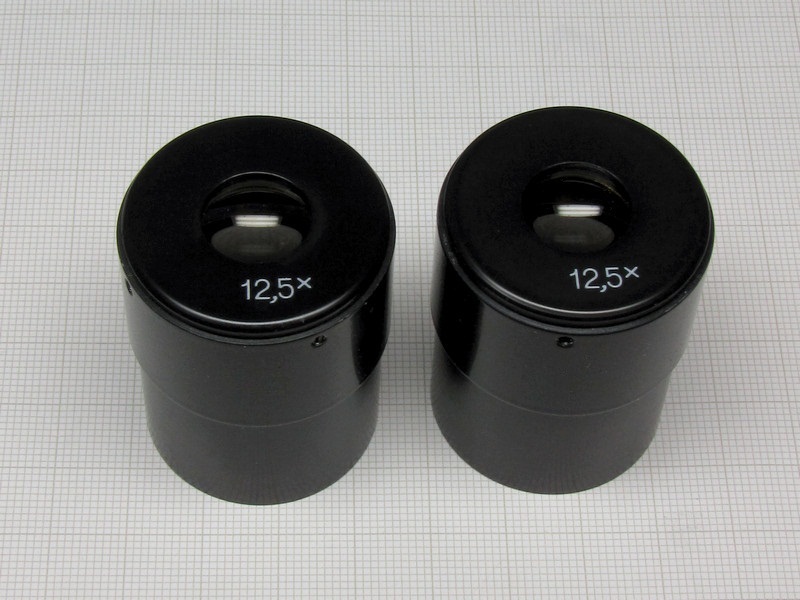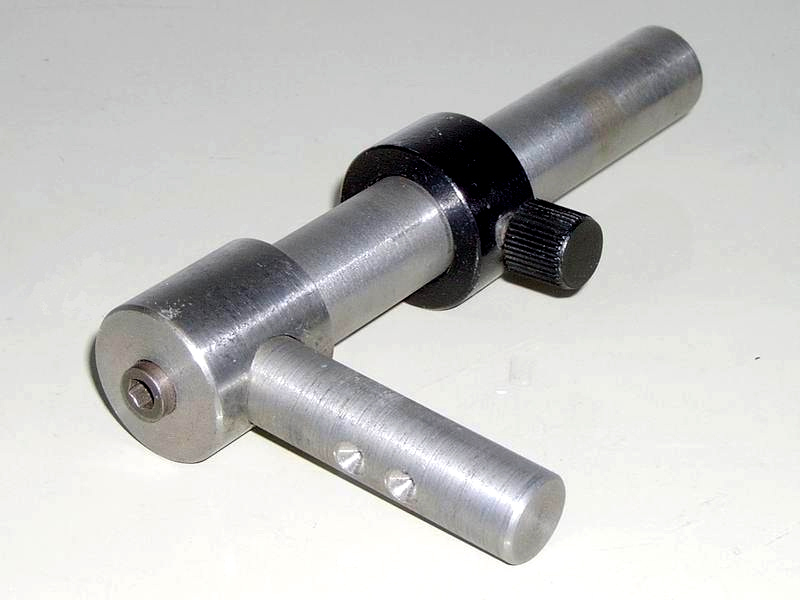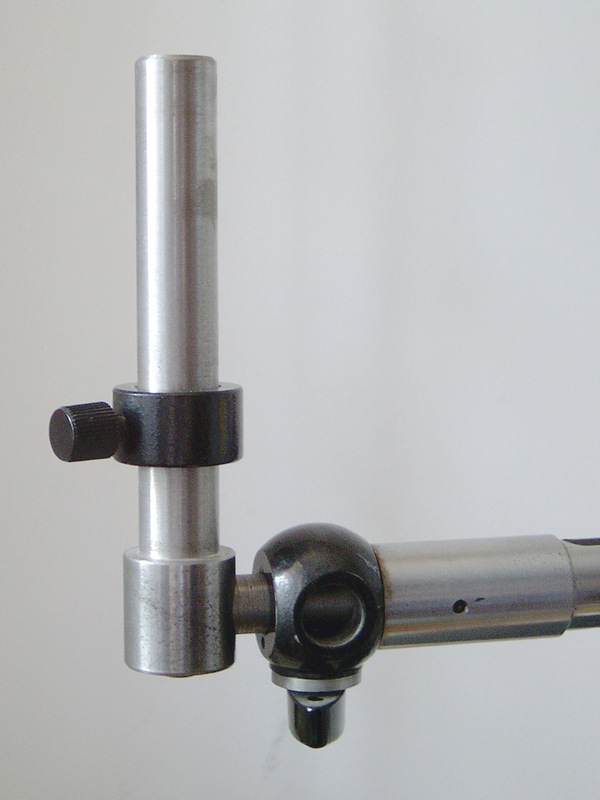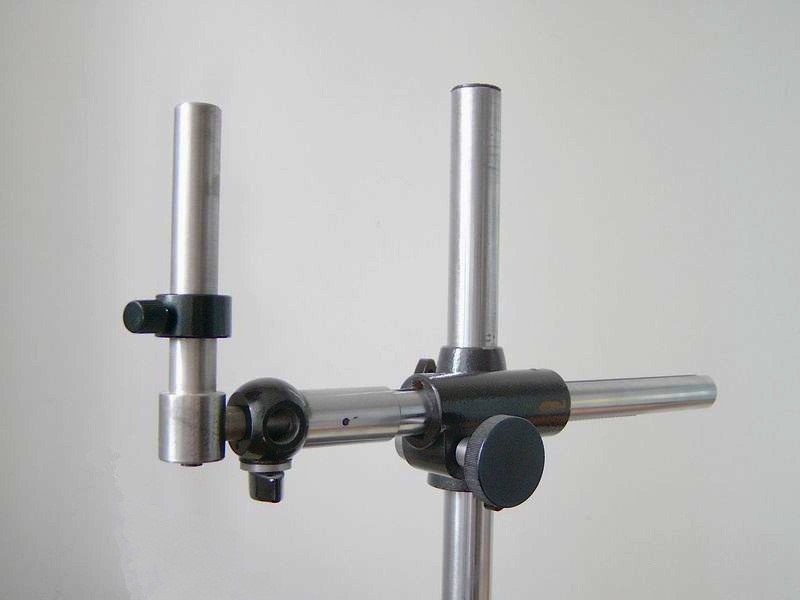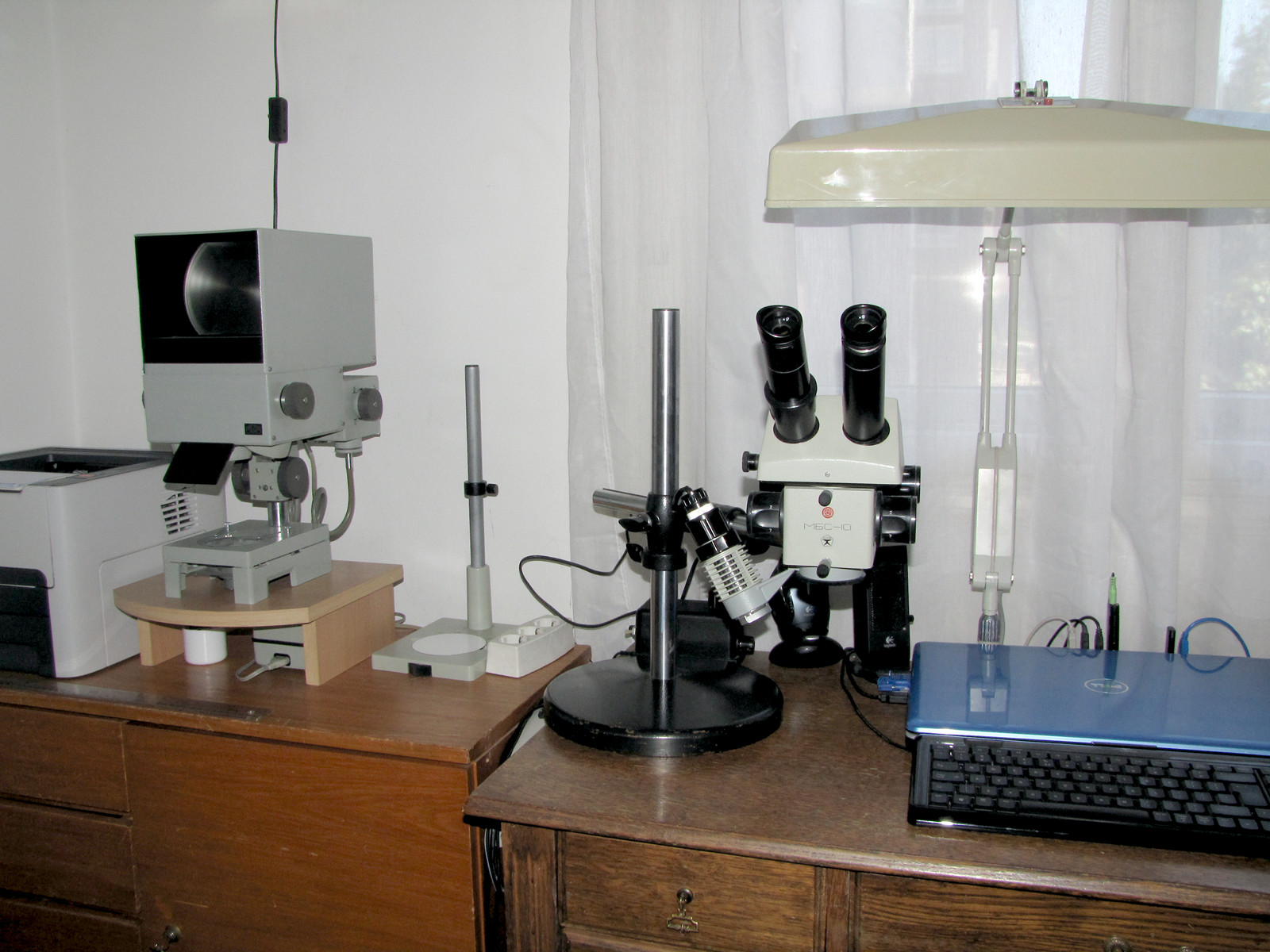|
|
||||||||||||||||||||||||||||||||||||||||||||||||||||||||||||||||||||||
|
ЛЗОС МБС-10 i.e. LZOS MBS-10 Binocular Stereoscopic Microscope |
||||||||||||||||||||||||||||||||||||||||||||||||||||||||||||||||||||||
| The MBS-10 stereoscope was originally designed by LOMO, in then Leningrad in USSR, and its production was performed in three state owned factories: "ЛОМО", "КОМЗ" and "ЛЗОС" i.e. LOMO, KOMZ and LZOS respectively. KOMZ an acronym for, in Russian, "Казанский Оптико-Механический Завод" translates into Kazan's Optical-Mechanical Factory, located in the town of Kazan. This particular stereoscope was made by LZOS, in town Lytkarino near Moscow. "ЛЗОС" an acronym for, in Russian "Лыткаринский Завод Оптического Стекла", which translates to: Lytkarino Factory of Optical Glass i.e. LZOS. | ||||||||||||||||||||||||||||||||||||||||||||||||||||||||||||||||||||||
|
||||||||||||||||||||||||||||||||||||||||||||||||||||||||||||||||||||||
| Nowadays, the only surviving plant with production of MBS-10 stereoscopes is LZOS, which has also produced a new generation of zoom stereoscope designated MBS-12. | ||||||||||||||||||||||||||||||||||||||||||||||||||||||||||||||||||||||
|
The object image is formed by objective pair (8) f'=180 mm, objective
(5) f'=90 mm, or objective (5) f'=190 mm, and one pair out of two pairs
(6 or7) of Galilean telescopes, set in a rotating drum placed in the
body, under the objective pair f'=180 mm and Schmidt prisms assembly
(9), that
are part of the binocular attachment.
Oculars are placed into two tubes, where the left side one is adjustable
to allow correction of differences in observer's eyes. Interpupillary
distance can be adjusted from 56 mm to 72 mm, by turning small knob on
the left hand side of the prism assembly, to suit need of the individual
observer.
With the Galilean telescope pair out of light path the total combined magnification when utilising CMO f'=90 mm is 2x with NA 0.072, and with CMO f'=190 mm total combined magnification is 0.95x with NA 0.034. |
||||||||||||||||||||||||||||||||||||||||||||||||||||||||||||||||||||||
|
|
||||||||||||||||||||||||||||||||||||||||||||||||||||||||||||||||||||||
|
The MBS-10 Optical Schematics, a typical CMO Stereoscope |
||||||||||||||||||||||||||||||||||||||||||||||||||||||||||||||||||||||
|
|
||||||||||||||||||||||||||||||||||||||||||||||||||||||||||||||||||||||
|
The above image illustrates differences between the two basic stereoscope designs, the Greenough and CMO |
||||||||||||||||||||||||||||||||||||||||||||||||||||||||||||||||||||||
|
Galilean telescopes are rotated into the light beam path, as per needed magnification, producing four different stereoscope magnifications of the object, the fifth is achieved by rotating Galilean telescopes out of the light path. Stereoscope magnification ranges from 1.6x to 100x, values for each of the two objectives are given in the tables below. The main difference between the two objectives, apart from magnification, is the front focal length. The shorter focal length objective f'=90 mm has working distance of 100 mm, measured from top surface of the object to the lowest lens point, while the longer focal length objective f'=190 mm provides working distance of 190 mm, allowing easy access to the object enabling the use of tools with ease. There is also an optional lens that can be mounted onto the f'=90 mm objective, which doubles the magnification but at the same time it halves the working distance and reduces the depth of field. Standard stereoscope base can be mounted onto the accessory base which is equipped with a mirror and mounting socket for the illuminator, located at the back of the base, so that it can be used with transmitted light for observation of transparent objects. Among the supplied accessories there is one metal object plate 100 mm in diameter, with one side painted matte black and on the other side matte white, also, there is transparent glass plate 100 mm in diameter with two clamps to hold object glass. Oculars in basic set are pairs of 6 x, 8 x and 14 x, plus one extra 8 x with a place for graticule inside, two graticules are supplied one a 10 mm 100 division scale with crosshair, and graticule grid 15 mm square, each grid square with sides of 1.0 mm. My set contains two extra oculars of magnification 12.5 x which were added as a bonus by the seller when I bought the stereoscope. Originally the 12.5 x ocular pair was supplied with one of the earlier models of stereoscope, designated MBS-2. I must say how my experience with electrical parts of the regulating transformer and the illuminator is satisfactory, quite the opposite to the experience pointed elsewhere by some other users. To my surprise all of the electrical parts are near military standard, or at least are in the unit shown here. |
||||||||||||||||||||||||||||||||||||||||||||||||||||||||||||||||||||||
|
|
||||||||||||||||||||||||||||||||||||||||||||||||||||||||||||||||||||||
|
The f' = 90 mm objective with working distance of 95 mm |
||||||||||||||||||||||||||||||||||||||||||||||||||||||||||||||||||||||
|
||||||||||||||||||||||||||||||||||||||||||||||||||||||||||||||||||||||
|
Table 1 |
||||||||||||||||||||||||||||||||||||||||||||||||||||||||||||||||||||||
|
||||||||||||||||||||||||||||||||||||||||||||||||||||||||||||||||||||||
| * Galilean telescopes are out of the light path | ||||||||||||||||||||||||||||||||||||||||||||||||||||||||||||||||||||||
| Table 2 | ||||||||||||||||||||||||||||||||||||||||||||||||||||||||||||||||||||||
|
|
||||||||||||||||||||||||||||||||||||||||||||||||||||||||||||||||||||||
|
|
||||||||||||||||||||||||||||||||||||||||||||||||||||||||||||||||||||||
|
Graph 1 |
||||||||||||||||||||||||||||||||||||||||||||||||||||||||||||||||||||||
|
Graph 1 shows values of measured NA of the objective f'=90 mm using G�rard Weiss method as suggested in Micscape article by David Walker |
||||||||||||||||||||||||||||||||||||||||||||||||||||||||||||||||||||||
|
|
||||||||||||||||||||||||||||||||||||||||||||||||||||||||||||||||||||||
|
Above image shows view of stage micrometer using objective f'=90 mm with Galilean telescope set at magnification of 1 x |
||||||||||||||||||||||||||||||||||||||||||||||||||||||||||||||||||||||
|
|
||||||||||||||||||||||||||||||||||||||||||||||||||||||||||||||||||||||
|
The f' = 190 mm objective with working distance of 180 mm |
||||||||||||||||||||||||||||||||||||||||||||||||||||||||||||||||||||||
|
|
||||||||||||||||||||||||||||||||||||||||||||||||||||||||||||||||||||||
|
||||||||||||||||||||||||||||||||||||||||||||||||||||||||||||||||||||||
|
Table 3 |
||||||||||||||||||||||||||||||||||||||||||||||||||||||||||||||||||||||
|
||||||||||||||||||||||||||||||||||||||||||||||||||||||||||||||||||||||
| * Galilean telescopes are out of the light path | ||||||||||||||||||||||||||||||||||||||||||||||||||||||||||||||||||||||
| Table 4 | ||||||||||||||||||||||||||||||||||||||||||||||||||||||||||||||||||||||
|
|
||||||||||||||||||||||||||||||||||||||||||||||||||||||||||||||||||||||
|
Graph 2 |
||||||||||||||||||||||||||||||||||||||||||||||||||||||||||||||||||||||
|
Graph 2 shows values of measured NA of the objective f'=190 mm using G�rard Weiss method as suggested in Micscape article by David Walker |
||||||||||||||||||||||||||||||||||||||||||||||||||||||||||||||||||||||
|
|
||||||||||||||||||||||||||||||||||||||||||||||||||||||||||||||||||||||
|
Above image shows view of stage micrometer using objective f'=190 mm with Galilean telescope set at magnification of 1 x |
||||||||||||||||||||||||||||||||||||||||||||||||||||||||||||||||||||||
|
|
||||||||||||||||||||||||||||||||||||||||||||||||||||||||||||||||||||||
|
The graph above, shows NA of 3 stereoscopes Leica S8 and Meiji EMZ1 as measured by David Walker and published in Micscape article with MBS-10 measurement results addition |
||||||||||||||||||||||||||||||||||||||||||||||||||||||||||||||||||||||
|
|
||||||||||||||||||||||||||||||||||||||||||||||||||||||||||||||||||||||
|
|
||||||||||||||||||||||||||||||||||||||||||||||||||||||||||||||||||||||
|
|
||||||||||||||||||||||||||||||||||||||||||||||||||||||||||||||||||||||
|
The camera adapter, "МФУ" i.e. Photo Micrography Attachment 'MFU' shown mounted with 35 mm SLR body |
||||||||||||||||||||||||||||||||||||||||||||||||||||||||||||||||||||||
|
|
||||||||||||||||||||||||||||||||||||||||||||||||||||||||||||||||||||||
|
|
||||||||||||||||||||||||||||||||||||||||||||||||||||||||||||||||||||||
|
|
||||||||||||||||||||||||||||||||||||||||||||||||||||||||||||||||||||||
| Photo Micrography Attachment 'MFU' shown mounted onto the MBS-10 in a typical set-up ready to accept digital camera | ||||||||||||||||||||||||||||||||||||||||||||||||||||||||||||||||||||||
|
|
||||||||||||||||||||||||||||||||||||||||||||||||||||||||||||||||||||||
|
|
||||||||||||||||||||||||||||||||||||||||||||||||||||||||||||||||||||||
|
|
||||||||||||||||||||||||||||||||||||||||||||||||||||||||||||||||||||||
|
Photo Micrography Attachment 'MFU' shown mounted onto the MBS-10 in a typical set-up with digital camera and with fibre optic EPI Illuminator |
||||||||||||||||||||||||||||||||||||||||||||||||||||||||||||||||||||||
|
|
||||||||||||||||||||||||||||||||||||||||||||||||||||||||||||||||||||||
|
|
||||||||||||||||||||||||||||||||||||||||||||||||||||||||||||||||||||||
|
The standard MBS-10 Illuminator with a two element collector lens |
||||||||||||||||||||||||||||||||||||||||||||||||||||||||||||||||||||||
|
|
||||||||||||||||||||||||||||||||||||||||||||||||||||||||||||||||||||||
|
The mains transformer with potentiometer for regulating light intensity |
||||||||||||||||||||||||||||||||||||||||||||||||||||||||||||||||||||||
|
|
||||||||||||||||||||||||||||||||||||||||||||||||||||||||||||||||||||||
|
Image above shows back side of the transmitted light base with illuminator lamp holder plugged in. |
||||||||||||||||||||||||||||||||||||||||||||||||||||||||||||||||||||||
|
|
||||||||||||||||||||||||||||||||||||||||||||||||||||||||||||||||||||||
| The original illuminator used for observation with reflected light leaves a lot to be desired due to shadow created when object is illuminated from only one side, plus it emits a large amount of heat. For these reasons I bought a low cost fluorescent circular lamp illuminator which casts shadowless light illuminating object evenly from all sides. There are similar illuminators with LEDs but in this case I prefer fluorescent light. | ||||||||||||||||||||||||||||||||||||||||||||||||||||||||||||||||||||||
|
|
||||||||||||||||||||||||||||||||||||||||||||||||||||||||||||||||||||||
|
Top view of the fluorescent illuminator |
||||||||||||||||||||||||||||||||||||||||||||||||||||||||||||||||||||||
|
|
||||||||||||||||||||||||||||||||||||||||||||||||||||||||||||||||||||||
|
Bottom view of the fluorescent illuminator |
||||||||||||||||||||||||||||||||||||||||||||||||||||||||||||||||||||||
|
|
||||||||||||||||||||||||||||||||||||||||||||||||||||||||||||||||||||||
|
Illuminator mounted onto the stereoscope |
||||||||||||||||||||||||||||||||||||||||||||||||||||||||||||||||||||||
|
|
||||||||||||||||||||||||||||||||||||||||||||||||||||||||||||||||||||||
|
The box with stereoscope accessories and spare bulbs, green filter and eyeshades |
||||||||||||||||||||||||||||||||||||||||||||||||||||||||||||||||||||||
|
|
||||||||||||||||||||||||||||||||||||||||||||||||||||||||||||||||||||||
|
The graticule with grid, and the green filter that can be fitted in front of the illuminator |
||||||||||||||||||||||||||||||||||||||||||||||||||||||||||||||||||||||
|
|
||||||||||||||||||||||||||||||||||||||||||||||||||||||||||||||||||||||
|
Articulated arm for holding object of small size allowing close examination of all its sides by simple rotation of the holder shaft, it fits in the base of the stereoscope. |
||||||||||||||||||||||||||||||||||||||||||||||||||||||||||||||||||||||
|
|
||||||||||||||||||||||||||||||||||||||||||||||||||||||||||||||||||||||
|
The pair of eyeshades that fit on top of the oculars preventing stray light from interfering |
||||||||||||||||||||||||||||||||||||||||||||||||||||||||||||||||||||||
|
|
||||||||||||||||||||||||||||||||||||||||||||||||||||||||||||||||||||||
|
The extra pair of oculars, magnification 12.5 x, extending the useful range of stereoscope. |
||||||||||||||||||||||||||||||||||||||||||||||||||||||||||||||||||||||
|
|
||||||||||||||||||||||||||||||||||||||||||||||||||||||||||||||||||||||
|
The heavy duty boom stand (with cast iron base) originally supplied with the MBS-2 stereoscope, needed modifying to enable use with MBS-10 thus I manufactured new mounting post for it, shown above |
||||||||||||||||||||||||||||||||||||||||||||||||||||||||||||||||||||||
|
|
||||||||||||||||||||||||||||||||||||||||||||||||||||||||||||||||||||||
|
The new mounting post securely positioned and fastened ready to carry stereoscope head assembly weighing 3 kg (6 lb 10 oz) |
||||||||||||||||||||||||||||||||||||||||||||||||||||||||||||||||||||||
|
|
||||||||||||||||||||||||||||||||||||||||||||||||||||||||||||||||||||||
|
The arm carrying stereoscope can be swung about the column (400 mm high), or can be locked in any position, arm extends 180-320 mm, mounting post to the column, controlled by rack and pinion |
||||||||||||||||||||||||||||||||||||||||||||||||||||||||||||||||||||||
|
|
||||||||||||||||||||||||||||||||||||||||||||||||||||||||||||||||||||||
|
Stereoscope mounted onto the heavy duty boom stand |
||||||||||||||||||||||||||||||||||||||||||||||||||||||||||||||||||||||

|
||||||||||||||||||||||||||||||||||||||||||||||||||||||||||||||||||||||
| top | ||||||||||||||||||||||||||||||||||||||||||||||||||||||||||||||||||||||
|
Fast Counter |
||||||||||||||||||||||||||||||||||||||||||||||||||||||||||||||||||||||
